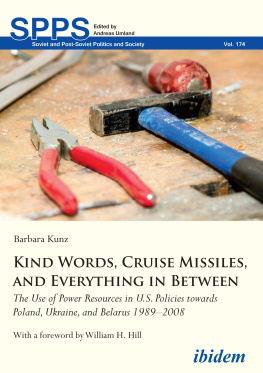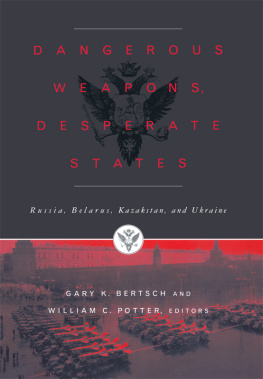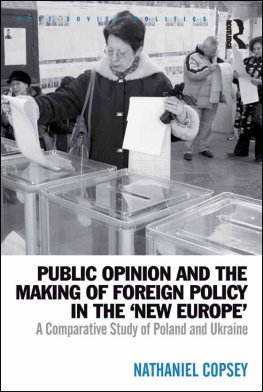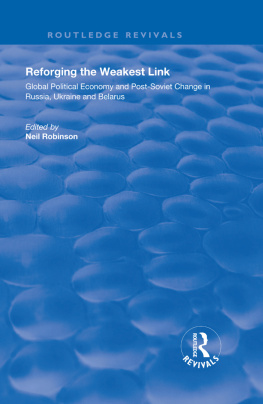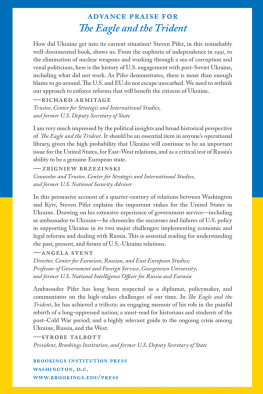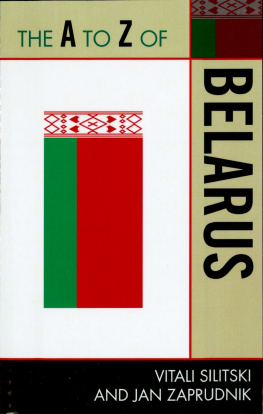Preface
During the Cold War American political leaders and government representatives advanced an unchanging policy toward the Soviet Bloc, calling for complete independence of these states from Moscow and observance of basic human rights and fundamental freedoms within them. As the Warsaw Pact and then the Soviet Union disintegrated in sudden, dramatic, and largely peaceful fashion from 1989 to late 1991, American leaders were faced with a dilemma as rare in international affairs as it was welcome: how to help fashion and put into the practice the institutional, political, and economic details of the independence and freedom won by the peoples of Eastern Europe and the Soviet Union after half a century of struggle. Although thinkers such as Francis Fukuyama heralded the momentous events in Europe as "the end of history," in truth for the nations of the Warsaw Pact and the former Soviet republics their independent national histories were recommencing after enforced interludes of decades, and for some, centuries.
Barbara Kunz's study, Kind Words, Cruise Missiles, and Everything in Between, describes and analyzes the efforts of American political leaders and diplomats during the first two decades after the end of the Cold War to develop and implement policies and courses of action that would help realize these lofty goals in three of the independent states which emerged from the end of the Soviet era: Poland, Ukraine, and Belarus. As an American diplomat and practitioner focusing on Europe and the former Soviet space during most of this period, the issues, policies, and events treated in this volume are intensely familiar, and reading about them evokes many memories and sensations, from satisfaction with successes to regrets over failures, omissions, and unexpected reverses. Since at least the adoption of the Helsinki Final Act, American representatives had been pushing for an end to the division of Europe into two hostile camps, calling for "a Europe whole and free." The dramatic events of 19891991 gave us a breathtaking opportunity to realize our wildest dreams for the future of Europe. At the same time, the epochal changes in Europe imposed a necessity for political vision and policy innovation comparable to that shown by post-World war II American and European leaders.
As the author indicates in her introduction, there is considerable doubt whether post-Cold War American presidents and administrations have had a consistent vision or grand strategy for Europeindeed, whether they have had any real European strategy or policy at all. In my opinion, derived considerably from my own experience as an American diplomat and practitioner during this period and involvement in many of the policy debates and initiatives, there have been several crucial common elements in basic principles of the approach of all U.S. administrations to the region from 1989 to the present. First of all, the George H.W. Bush administration decided that the U.S. would remain physically present and actively involved in European security and defense affairs, a decision which has been reaffirmed and continued by each subsequent American administration (until the present one, for which at this writing the jury seems to be still out). This decision was neither preordained nor inevitable, and has had a formative influence on post-Cold War European history.
Second, Washington has insisted that all of the Warsaw Pact states and former Soviet republics should enjoy complete independence and sovereignty, without external limitations on their choice of geopolitical orientation or security arrangements. Growing out of opposition to the forced participation of the Soviet satellites in the Warsaw Pact, this basic principle provided one of the important intellectual underpinnings for the policies of NATO and EU expansion. Third, with respect to the internal political, economic, and social systems and arrangements within these states, both Republicans and Democrats in Washington generally expected that they would all undergo transitions from Soviet-style authoritarian political systems and command economies to open, pluralist, democratic polities and market economies.
There may have been important differences in the details of their analyses and approaches, but most of my colleagues inside and outside of government in the U.S. seemed to expect that such a transition was simply the natural order of things. This was, after all, the era of Samuel Huntington's Third Wave and the ascendance of the Washington consensus. Democratization and marketization were integral features of the intellectual and political context within which American policies were formed, including and in particular with respect to countries in this region. As one follows the arguments in this volume, one might conclude that perceived progress in pursuit of these two general principles of the American approach was one particularly important criterion in the determination made by U.S. administrations that a particular country or administration was friendly, undecided, or non-friendly.
Barbara Kunz's study delves into the specific details and reasons why, for U.S. policymakers and diplomats from 1989 to 2008, Poland was an overwhelmingly friendly country, Ukraine an undecided interlocutor, and Belarus after 1994 pretty clearly a non-friend. My own assessments agree emphatically with these characterizations, although I have reached my own conclusions more through observation and experience, and not the more rigorous analysis contained in this study. Irrespective of this difference, this volume addresses the same basic question that we American practitioners faced when dealing with non-communist Poland and newly independent Ukraine and Belarus: why did we get very different results in three countries which started in 19891991 from very similar circumstances? Why were we unable to apply largely similar policies and actions to each country and achieve similar results? From my own personal experience, I can attest that in the early 1990s (at the least) these questions were decidedly not just academic.
From 1989 on Poland was in most respects a pleasant surprise for American officials. Under both President Walesa and Kwasniewski, the land of the liberum veto achieved a commendable degree of political pluralism, freedom, and stability, while the Balcerowicz reforms seemed to produce the greatest progress toward a market economy in the region. The large Polish diaspora in the United States provided considerable domestic political support for the policy of NATO enlargement, while Polish representatives worked particularly closely with their American colleagues to make an enlarged Alliance a reality. In the 2000s Warsaw was at the forefront of "new Europe" standing with Washington in Afghanistan and Iraq. Differences between the two countries seemed minor, and policy visions and collaboration were closely aligned.
In contrast, for American practitioners Ukraine always seemed somewhere "in between." After the false start of President George H.W. Bush's "chicken Kiev" speech, American support for Ukraine's independence, sovereignty, and territorial integrity was unwavering. At times Washington asked Kiev to do things it found difficult or unpleasant in pursuit of larger political goals, such as giving up its nuclear weapons and delivery systems to Russia or accepting more flexibility for internal Russian troop deployments in the 1996 CFE Flank Agreement. On the other hand, the U.S. supported Ukraine on the status of Crimea and the presence of Russian military forces there, and played a leading role in fashioning Ukraine's "distinctive partnership" with NATO. In the 2000s, Washington offered strong support for the Orange revolution and Ukraine's bid for NATO membership.

